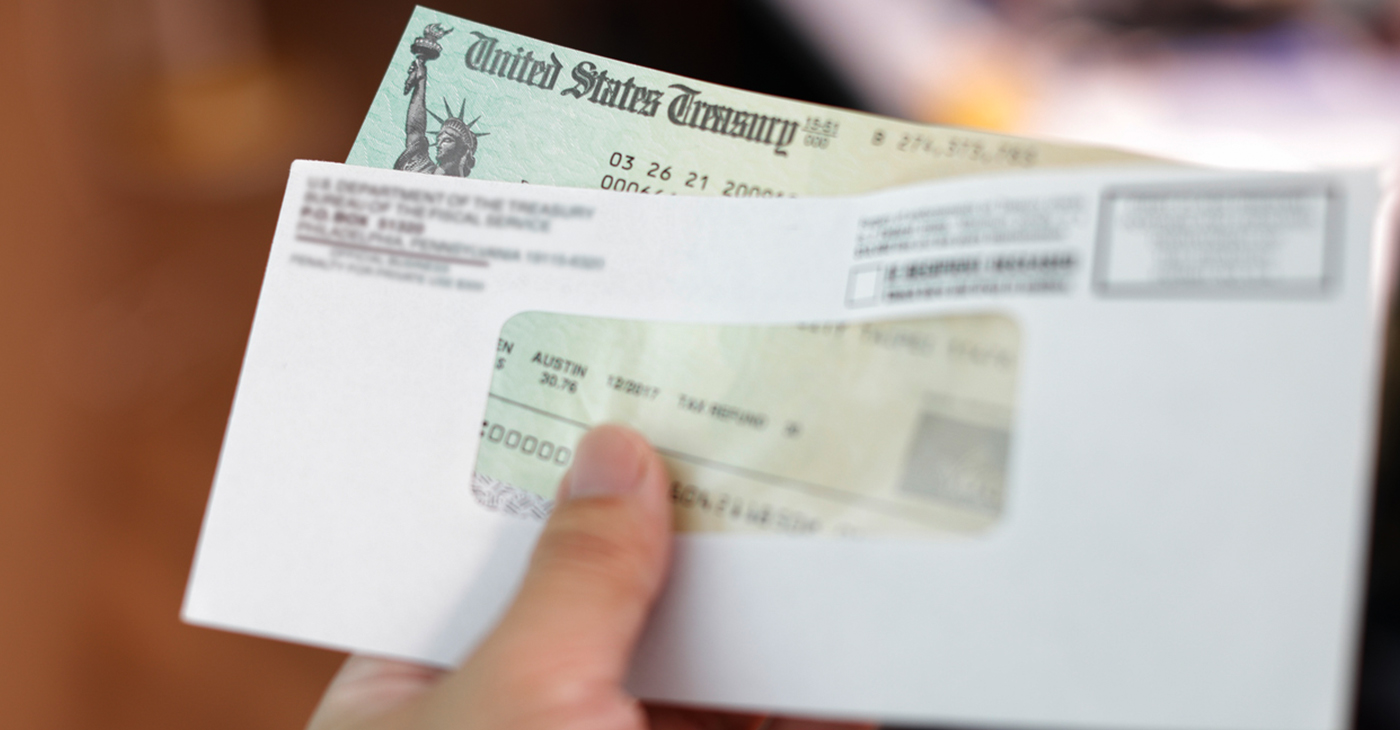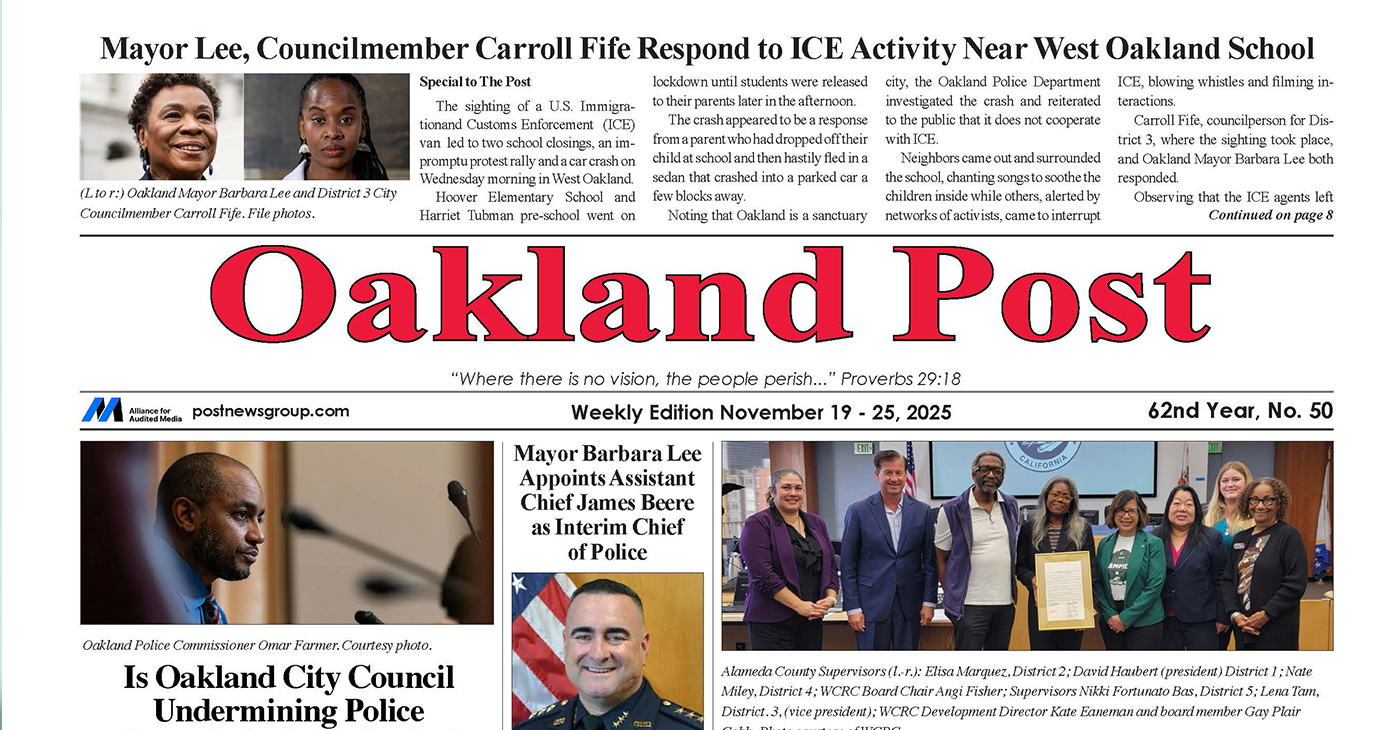Bay Area
Tax Rebates Coming in October to Help with Higher Costs Caused by Inflation
Beginning in early October, most California residents will start receiving cash refunds to help respond to the higher costs caused by inflation. California’s Better for Families tax refund program was funded in the 2022-23 state budget and will provide an estimated $9.5 billion in rebates to approximately 17.5 million California families.

Nancy Skinner, State Senator, District 9 issued the following statement on Tuesday, Sept. 13:
Dear Constituent,
Beginning in early October, most California residents will start receiving cash refunds to help respond to the higher costs caused by inflation. California’s Better for Families tax refund program was funded in the 2022-23 state budget and will provide an estimated $9.5 billion in rebates to approximately 17.5 million California families. The refunds are scheduled to start rolling out in October and continue until January.
To receive a refund, you must have completed a 2020 state tax return by Oct. 15, 2021 and have 2020 earnings of no higher than $250,000 as a single filer, or $500,000 as a joint filer. Refund amounts are based on your 2020 tax filing:
2020 Single filers who earned up to $75,000 a year and Joint filers who earned up to $150,000 will receive $350 per taxpayer, plus an additional $350 if they claimed one or more dependents on their 2020 return. Maximum payment is $1,050.
2020 Single filers who earned $75,001 to $125,000 and Joint filers who earned $150,001 to $250,000 will receive $250 per taxpayer, plus an additional $250 if they claimed one or more dependents on their 2020 return. Maximum payment is $750.
2020 Single filers who earned $125,001 to $250,000 and Joint filers who earned $250,001 to $500,000 will receive $200 per taxpayer, plus an additional $200 if they claimed one or more dependents on their 2020 return. Maximum payment is $600.
To calculate how much you will receive, based on your 2020 tax return, click here.
If you filed your 2020 tax return electronically and received a refund by direct deposit, then your Better for Families tax refund will be made via direct deposit. If you mailed in your return, or do not have direct deposit set up with the Franchise Tax Board, you will receive your rebate through a debit card mailed to your home address.
California’s 2022-23 state budget contained additional financial relief for vulnerable Californians, including an increase in the grant amount for SSI/SSP recipients beginning Jan. 1, 2023 and an increase in the grant amount to families participating in the CalWORKS program.
As chair of the state Senate Budget Committee, it was my honor to work on this year’s broad-based financial relief programs. Please see my previous e-newsletters on other major budget actions this year, including record investments in education, unprecedented support for health care and reproductive services, and billions in additional funding to address our housing and homelessness crises.
I hope you find this information useful. It is an honor serving you in the state Senate.
Sincerely,
Nancy Skinner
State Senator, District
Alameda County
Seth Curry Makes Impressive Debut with the Golden State Warriors
Seth looked comfortable in his new uniform, seamlessly fitting into the Warriors’ offensive and defensive system. He finished the night with an impressive 14 points, becoming one of the team’s top scorers for the game. Seth’s points came in a variety of ways – floaters, spot-up three-pointers, mid-range jumpers, and a handful of aggressive drives that kept the Oklahoma City Thunder defense on its heels.

By Y’Anad Burrell
Tuesday night was anything but ordinary for fans in San Francisco as Seth Curry made his highly anticipated debut as a new member of the Golden State Warriors. Seth didn’t disappoint, delivering a performance that not only showcased his scoring ability but also demonstrated his added value to the team.
At 35, the 12-year NBA veteran on Monday signed a contract to play with the Warriors for the rest of the season.
Seth looked comfortable in his new uniform, seamlessly fitting into the Warriors’ offensive and defensive system. He finished the night with an impressive 14 points, becoming one of the team’s top scorers for the game. Seth’s points came in a variety of ways – floaters, spot-up three-pointers, mid-range jumpers, and a handful of aggressive drives that kept the Oklahoma City Thunder defense on its heels.
One of the most memorable moments of the evening came before Seth even scored his first points. As he checked into the game, the Chase Center erupted into applause, with fans rising to their feet to give the newest Warrior a standing ovation.
The crowd’s reaction was a testament not only to Seth’s reputation as a sharpshooter but also to the excitement he brings to the Warriors. It was clear that fans quickly embraced Seth as one of their own, eager to see what he could bring to the team’s championship aspirations.
Warriors’ superstar Steph Curry – Seth’s brother – did not play due to an injury. One could only imagine what it would be like if the Curry brothers were on the court together. Magic in the making.
Seth’s debut proved to be a turning point for the Warriors. Not only did he contribute on the scoreboard, but he also brought a sense of confidence and composure to the floor.
While their loss last night, OKC 124 – GSW 112, Seth’s impact was a game-changer and there’s more yet to come. Beyond statistics, it was clear that Seth’s presence elevated the team’s performance, giving the Warriors a new force as they look to make a deep playoff run.
Activism
Oakland Post: Week of November 26 – December 2, 2025
The printed Weekly Edition of the Oakland Post: Week of November 26 – December 2, 2025

To enlarge your view of this issue, use the slider, magnifying glass icon or full page icon in the lower right corner of the browser window.
Activism
Oakland Post: Week of November 19 – 25, 2025
The printed Weekly Edition of the Oakland Post: Week of November 19 – 25, 2025

To enlarge your view of this issue, use the slider, magnifying glass icon or full page icon in the lower right corner of the browser window.
-

 Activism3 weeks ago
Activism3 weeks agoOakland Post: Week of November 12 – 18, 2025
-

 Activism3 weeks ago
Activism3 weeks agoIN MEMORIAM: William ‘Bill’ Patterson, 94
-

 Activism3 weeks ago
Activism3 weeks agoHow Charles R. Drew University Navigated More Than $20 Million in Fed Cuts – Still Prioritizing Students and Community Health
-

 Bay Area3 weeks ago
Bay Area3 weeks agoNo Justice in the Justice System
-

 #NNPA BlackPress3 weeks ago
#NNPA BlackPress3 weeks agoThe Perfumed Hand of Hypocrisy: Trump Hosted Former Terror Suspect While America Condemns a Muslim Mayor
-

 #NNPA BlackPress2 weeks ago
#NNPA BlackPress2 weeks agoTrump’s Death Threat Rhetoric Sends Nation into Crisis
-

 #NNPA BlackPress4 weeks ago
#NNPA BlackPress4 weeks agoProtecting Pedophiles: The GOP’s Warped Crusade Against Its Own Lies
-

 #NNPA BlackPress2 weeks ago
#NNPA BlackPress2 weeks agoLewis Hamilton set to start LAST in Saturday Night’s Las Vegas Grand Prix
























































